14 Pro Tips For Staying Warm In A Sleeping Bag
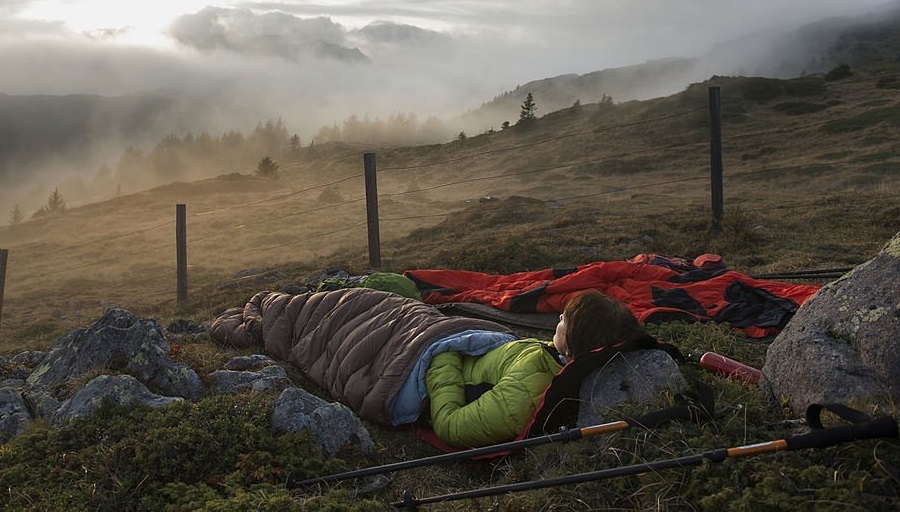
Worried about getting cold while camping? A chilly night can severely impact your camping and hiking experience, leading to poor performance the next day. Ensuring you stay warm in your sleeping bag is crucial for a good night’s sleep, which is essential to recharge your energy for the adventures ahead. Fortunately, staying cozy isn’t complicated if you know the right tricks. Here are 14 Tips For Staying Warm In A Sleeping Bag that will enhance your sleep quality and keep you comfortable throughout the night.
Mastering the Art of Cozy Nights in Your Sleeping Bag
Let’s delve into these 14 steps to provide detailed insights and tips for staying comfortably warm during your outdoor adventures.
1. Raise Your Body Temperature With a Bag
A sursac, also known as a bivouac sack, serves as a waterproof protective layer for a sleeping bag. Among the most commonly used types are water-repellent outer bags, often paired with a tarp to shield your sleeping bag from adverse weather conditions during the night. This combination serves a dual purpose: keeping your sleeping bag dry and enhancing its insulation capacity by approximately 5 degrees.
You can opt for 3 types of water-repellent over bags:
- Over bag with an open hood: it is light and waterproof-breathable;
- Closed sursac: It is waterproof and closes completely;
- Cursac closed with hoop: They incorporate a mosquito net;
2. Choose the Most Suitable Size
There are various sizes of sleeping bags. The most suitable sleeping bag must correspond to your morphology. A sleeping bag that is too big will take longer to warm you up. In this sense, a bag that is too small will not warm you at all. You also need to make sure that the hood of your sleeping bag covers your head properly.
Here are the guidelines for choosing the most suitable bedding size:
- The shorts size: If you are less than 1m65 tall;
- The regular size: If you are between 1m65 and 1m80;
- The long size: If you are over 1m80;
3. Optimize the Right Position in Your Sleeping Bag
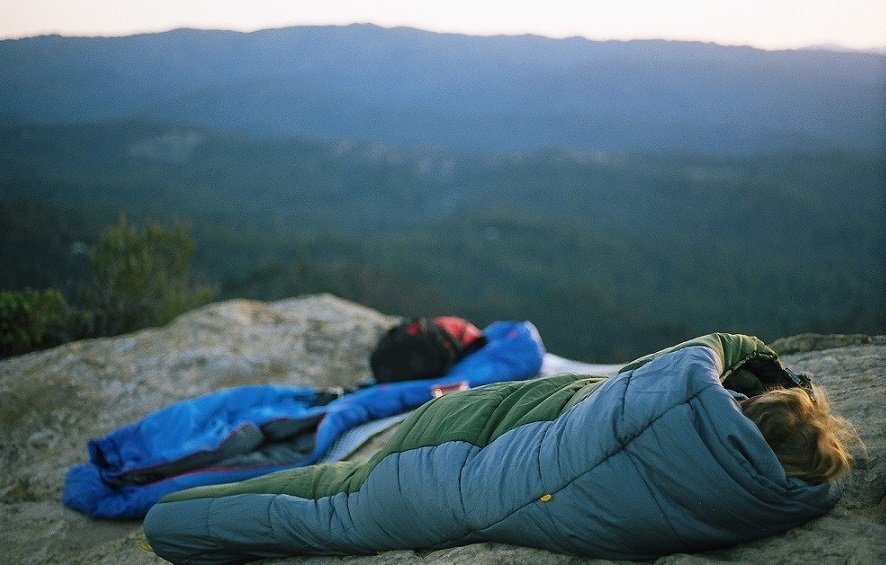
Here we are attacking a point that may seem ridiculous, but all those who have spent very cold nights will understand exactly what I mean. Because the difference between a good and a bad night sometimes does not matter much in these conditions.
Most backpacking sleeping bags are narrow and form-fitting to avoid cold spots. They are also made to rotate with the sleeping bag and not in the sleeping bag. Similarly, if you sleep together (very likely if it’s cold), don’t huddle together in the sleeping bag, but huddle the sleeping bag with you.
The goal is to avoid compressing the sleeping bag in certain places where the cold is likely to penetrate. For example, when sleeping together, I often feel the coldest in my knees and buttocks, because I tend to crush the sleeping bag – which no longer insulates as well – in these places.
4. Sleep on an Insulating Mattress
Most of the cold you can feel comes from the ground. A good quality insulating mattress provides good insulation against the cold. It must have an R-value. It corresponds to its ability to retain heat. A high R-value retains heat better. In cold weather, it will be better to take a mattress with an R-value greater than 5. On the other hand, in the summer months, you can take a lower one.
Here are the different types of insulation blankets:
- Inflatable mattresses: these are comfortable mattresses;
- Self-inflating mattresses: these are compact mattresses;
- Closed cell foam mattresses: these are bulky mattresses.
5. Dress Warmly
If you are afraid of the cold, you can wear merino wool clothes. Merino wool is soft, ultra-fine, and anti-itch. It can regulate your body temperature. It also makes it possible to compensate for temperature differences in cold or hot weather. You will therefore be able to be warm in periods of extreme cold.
Here are the main benefits of merino wool:
- Odor neutralization: keratin destroys bacteria that create bad odors;
- Moisture regulation: the wool remains warm and comfortable even when wet;
- Temperature regulation: wool fibers offer optimal thermal insulation
6. Use a Hot Water Bottle
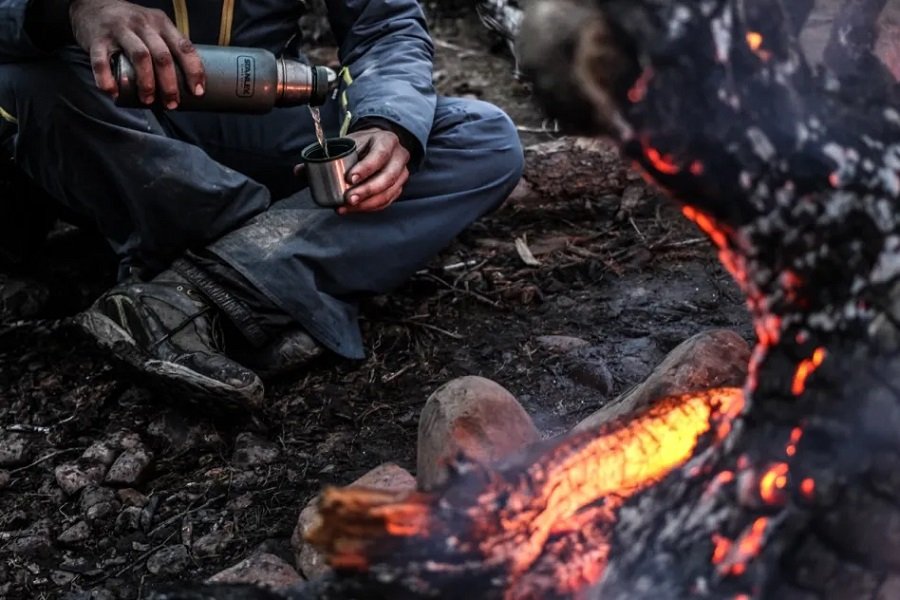
The hot water bottle brings you both warmth and comfort. If you are too afraid of the cold, you can consider buying one. There is a wide range of hot water bottles for camping with different formats and properties. It is therefore recommended to choose a hot water bottle according to your specific needs and the duration of use.
Here are the different hot water bottles to use according to your needs:
- Hot water bottle in seeds: it is used for its immediate heat for 15 to 30 minutes;
- Water bottle: it is used for its diffuse heat for at least 8 hours;
- Electric hot water bottle: it is used by those who wish to have control over the temperature and the heating time.
7. Eat a Hot and Light Meal
The feeling of warmth during the night largely depends on the evening meal. Food actively participates in the process of warming up your body. Some foods more than others have properties that help your body fight against periods of extreme cold. A meal and digested will be digested much more quickly by your organism.
Here are the foods you can cook for your meal:
- Fresh ginger: it produces adrenaline to increase body temperature.
- Coconut oil: it increases the activity of cells to warm your body;
- Sardines: they provide fatty acids and proteins to increase body temperature.
8. Sip on a Warming Beverage
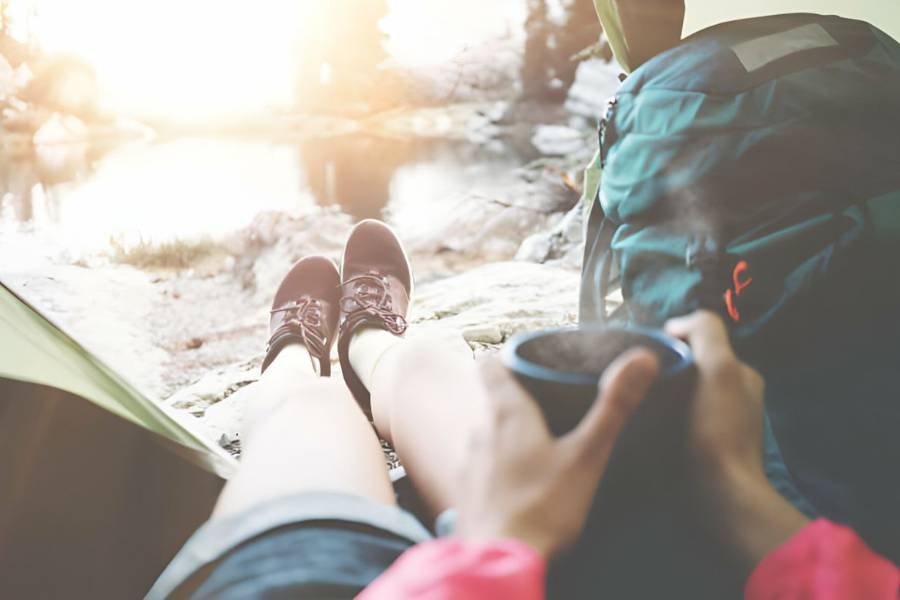
It is recommended to drink warm in the evening before going to sleep. It provides nutrients such as minerals, vitamins, and trace elements that promote sleep with a feeling of warmth. They also allow the body to produce adrenaline which promotes good blood circulation.
Here are the hot drinks to consume before sleeping:
- A herbal tea of thyme: it strengthens immunity and vitality;
- A fresh ginger infusion: it participates in the irrigation of the mucous membranes of the digestive system;
- Decaffeinated green tea: it is rich in amino acids.
9. Protect Your Sleeping Bag From Humidity
Humidity clogs the airways which disrupts sleep. Poor insulation of your sleeping bag against humidity will deprive you of any source of heat. This will prevent you from having a pleasant and restful night. In addition to being cold, you may also have allergies and respiratory problems.
Here are the covers to use to protect it from humidity:
- A waterproof bag: it keeps the contents of your sleeping bag dry;
- A large capacity garbage bag: it offers good resistance to rain;
- A plastic bag: it is perfectly airtight;
10. Shelter From the Wind
Our body has the capacity to heat the air that is in contact with our skin. It has a layer of air warmer than the ambient air which protects us from the ambient air temperature. However, if we do not shelter enough from the wind, our skin is exposed to the ambient air. The wind therefore increases our feeling of cold. Proper shelter from the wind avoids this feeling of cold.
Here are the parameters you need to take into account:
- The choice of location: it is necessary to refer to the position of the wind;
- Cold insulation: branches must be used to insulate the tent;
- The appearance of the tent canvas: avoid being completely enclosed;
11. Properly Close Your Sleeping Bag
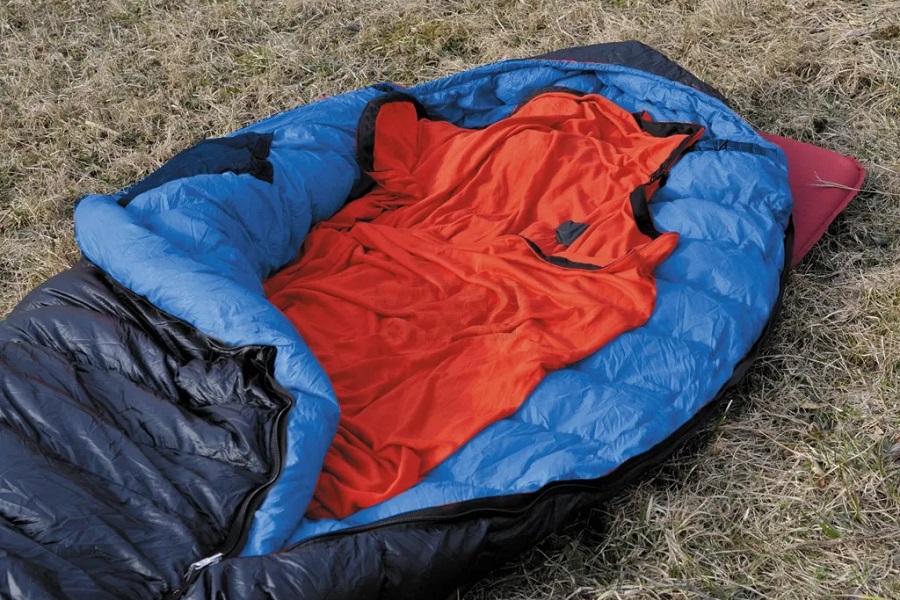
This is the most optimal solution to avoid cold drafts. Only your face should stick out of your sleeping bag. It is therefore advisable to stay as muffled up as possible so that you only have your mouth and nose sticking out. The most important thing is to have your feet well wedged inside the sleeping bag because it is the part of the body where you feel the coldest.
Here are the main components of the sleeping bag to be adjusted:
- The zipper: close the zipper to the top;
- The shoulder collar: handle the Velcro closure and the drawstring;
- The hood: examine the effectiveness of the tightening system to adjust the hood perfectly;
12. Adopt the Right Posture in Your Sleeping Bag
Adopting a good or bad posture is important on a cold night. If you are curled up on yourself, you will not feel the slightest sensation of cold. This position only makes it possible to lessen this feeling. This is why it is recommended to lie on your back. This posture makes it possible to reach a thermal balance so as not to feel the cold outside.
Here are some guidelines for adopting the correct posture:
- The appearance of the sleeping bag: it is worth avoiding sleeping with a compressed sleeping bag;
- The position of your arms: you must put your arms along the body;
- Your body posture: extending your sleeping bag as far as possible;
13. Protect Your Head From the Cold
The head is the part of your body that dissipates the most heat. If you don’t cover your head, the cold will spread inside your whole body. If you catch a cold, you will suffer from hypothermia, which is very dangerous. It is therefore essential to use accessories that will allow you perfect insulation against the cold.
Here are some accessories to insulate you from the cold:
- A knit hat: this is the material that provides the most warmth;
- A lined hood: It prevents the wind from reaching your face;
- A winter turban: they are warm, soft and thick.
14. Do Not Forget to Urinate Before Going to Sleep
Your body expends energy when you are not going to urinate. Keeping warm urine prevents other parts of your body from getting warm. You will therefore feel a sensation of extreme cold throughout the night. Once you lie down, your body will produce less urine. You probably won’t want to go to the bathroom afterward.
Here are some guidelines for urinating:
- Bending over: this creates pressure on the abdominal muscles;
- Lean on the lower abdomen: this facilitates the arrival of urine;
- Tap your bladder: this helps find the most sensitive spot;
Conclusion
Sleeping outside with a sleeping bag can be comfortable and warm! If you plan ahead, you can ensure that your camping experience is as enjoyable as possible, leaving you eager for your next adventure. Often, simple and practical Tips For Staying Warm In A Sleeping Bag can make all the difference, allowing you to optimize your nights and avoid getting cold. It would be a mistake not to take advantage of these tips!
No more excuses, come on, get out! But with the right equipment…
We hope these few tips will help you have a comfortable and restorative night.
See you very soon!






